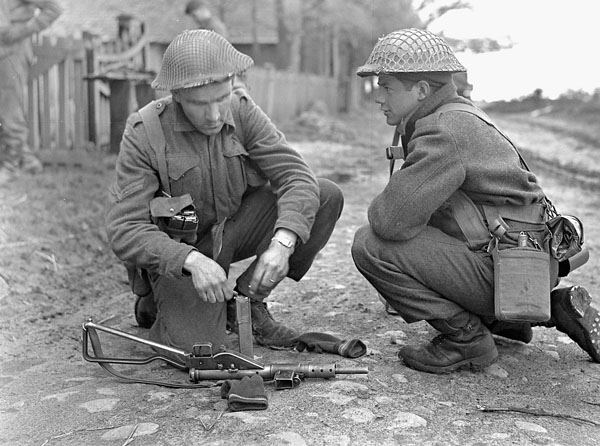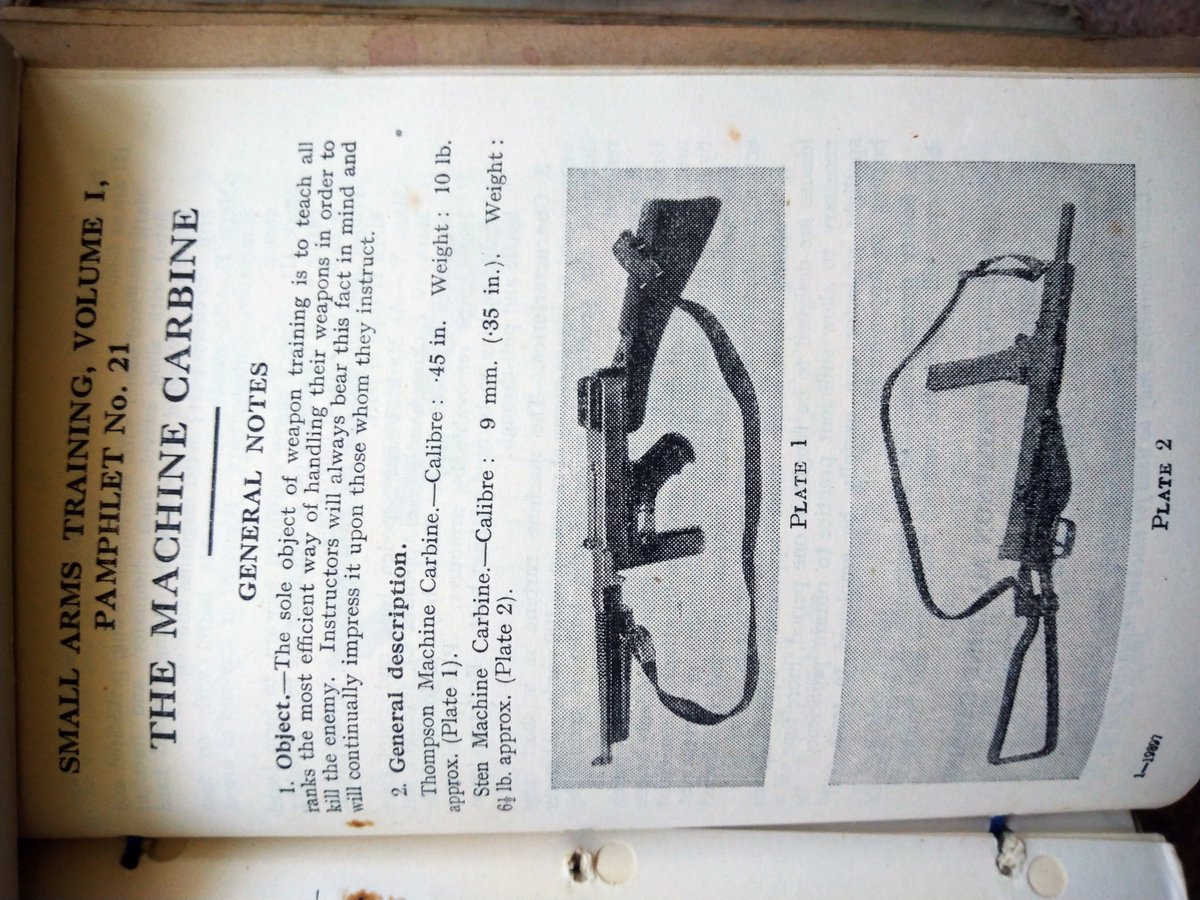Been doing some research focused on infantry weapons recently for the PhD. Saw this great photo posted by @Medical_Int which shows Infantrymen of Les Fusiliers Mount-Royal, one bombing up a Sten mag. THREAD.
2) Photo taken in Germany in April 1945. Canadian regiment.
3) The Sten has, it& #39;s fair to say, a mixed reputation. Made in huge numbers and used across all theatres, it acquired, quite early on, some negative opinions.
4) The Sten (name is an acronym involving designers and the Royal Small Arms Enfield factory) entered service in 1941. The brief was to produce something cheaper and quicker to manufacture than the main SMG then in use.
5) It fired a 9mm parabellum round, was blowback operated with an open bolt. It weighed about 7 lbs.
6) It was to replace the . 45 cal Thompson SMGs from the US, an ageing but tried and tested wpn that weighed in at roughly 10lbs.
8) The handwritten notes are from the original owner of the pamphlet. They are quite instructive in places!
9) One thing he notes is that the optimum load for the mag is 27 rds. Anecdotally, I& #39;ve heard that elsewhere as well. The Sten box mag was designed to take 32 rds.
10) Putting one or two less rds is not unusual to prevent stoppages but that& #39;s five less and now we get down to the issues....
11) The reliability of the Sten was raised early on. Issues identified were accuracy, stoppages and safety. But, it was comparatively cheap to manufacture and could be produced rapidly.
12) Now, I& #39;ve never fired or handled a Sten so I& #39;m going on opinions of others and official reports. However, reading accounts from various 21AG infantry units who& #39;d come back from Italy in early 44 and been issued with Stens...
13) It& #39;s quite clear they weren& #39;t that well regarded initially at least. One motor battalion NCO (SMGs were largely carried by NCOs ourside of a few specific units) stated they would have preferred to keep the Thompsons.
14) This same sergeant went on to claim that in Normandy (from the rest of his account, prob. July) he fired six (6) *magazines* at an exposed small group of Germans who were on the other side of a field to no effect. This might sound unlikely but ...
15) ...his interviews seem to be largely devoid of hyperbole and he was an experienced soldier who& #39;d been with his battalion since 1940.
16) The lack of a proper safety either via a catch or a selector lever was also problematic. The cocking handle could be placed into a retaining slot but it was easily dislodged. Accidents could and did happen. Tracy Cragg’s excellent PhD thesis...
17) contains the tragic story of a man killed on board a troop ship (en route to Normandy) in 2 EYORKS as a result of this.
19) However, the Sten could put down approx 500-600 rounds per minute and was extremely robust; also, it was light and easy to maintain. Built mainly from stamped metal components it was easy to make. About two million were built in the UK, Canada and New Zealand during the war.
21) Several variants were produced during the war. The Mk II was produced in largest numbers. Changes were made to improve performance throughout its service.
22) Large numbers were provided to European resistance movements in 1943-44. An obvious choice as light and cheap. In Denmark, resistance groups actually produced some themselves. One on the IWM site https://www.iwm.org.uk/collections/item/object/30035929">https://www.iwm.org.uk/collectio...
23) Ultimately though, the Sten doesn& #39;t seem to enjoy the same reputation in veteran accounts as say the Bren or No. 4 Rifle. It was probably just good enough and that was enough. A cheap stop gap introduced at a time of crisis to meet specific needs. ENDS.

 Read on Twitter
Read on Twitter






